After a restful and necessary sleep, we woke at stupid o’clock with a grand plan, it was time to see and experience the breadth of the inner city of Lisbon.
Breakfast, shower, packed lunch, water bottles. We walked to the top of our hill to a tram stop and awaited one of the first trams on the 28 route, heading towards Campo de Ourique, a large historic cemetery. Given we embarked at Callhariz (Bica), the trip was about a third of the route. We got on early so we could sit. Later in the day this tram gets crazy busy, with uncomfortable standing sardines the game tourists play, so we were being strategic.
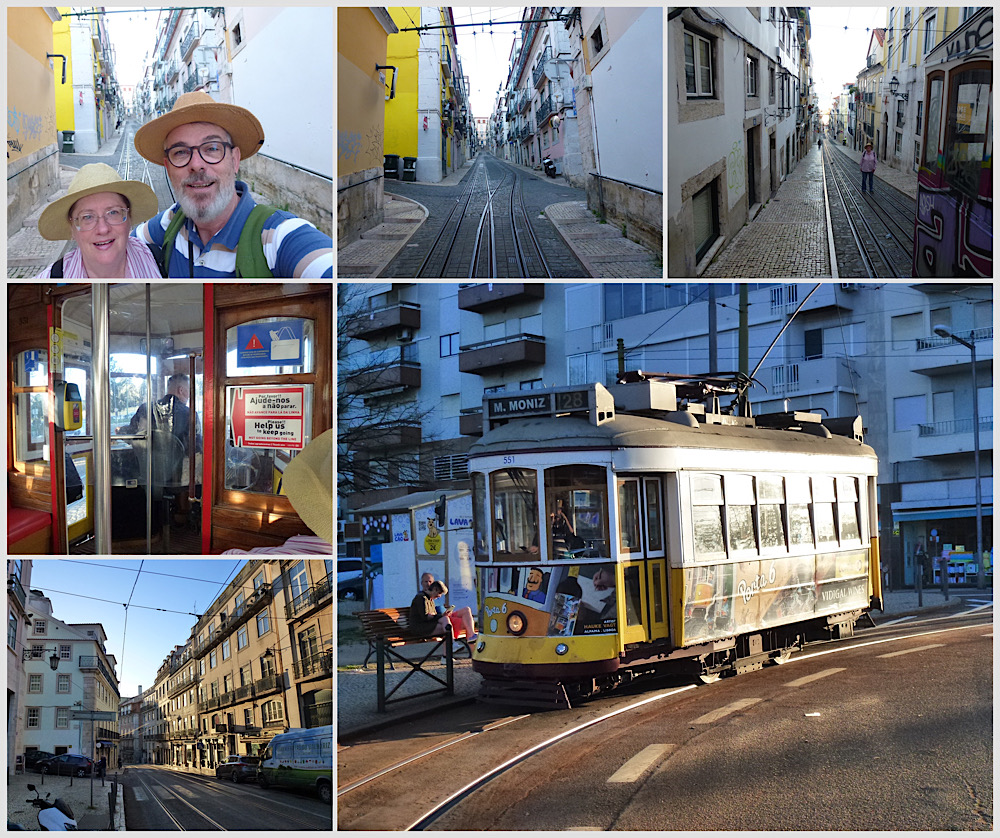
Once at Campo de Ourique (one terminus for this route), we waited for the tram to make it’s return journey, the full 7ish km across the inner city, and hopped on. As one of the first on board, we selected a double seat near the back, opened the window and enjoyed the ride up and down, around and along a picturesque route that goes past many of the city’s landmarks. We traveled to the terminus at Martim Moniz. The plan was simple enough: walk the return route, following the tram lines, taking scenic side trips as they presented themselves to us.
The day was sunny, a little cooler than the previous day, but still unseasonably warm. We had our hats, sunglasses, cameras and comfortable shoes (you need them to not be shredded by the particular form of cobble/mosaic roads and foot paths that are everywhere in Lisbon) and we set off.
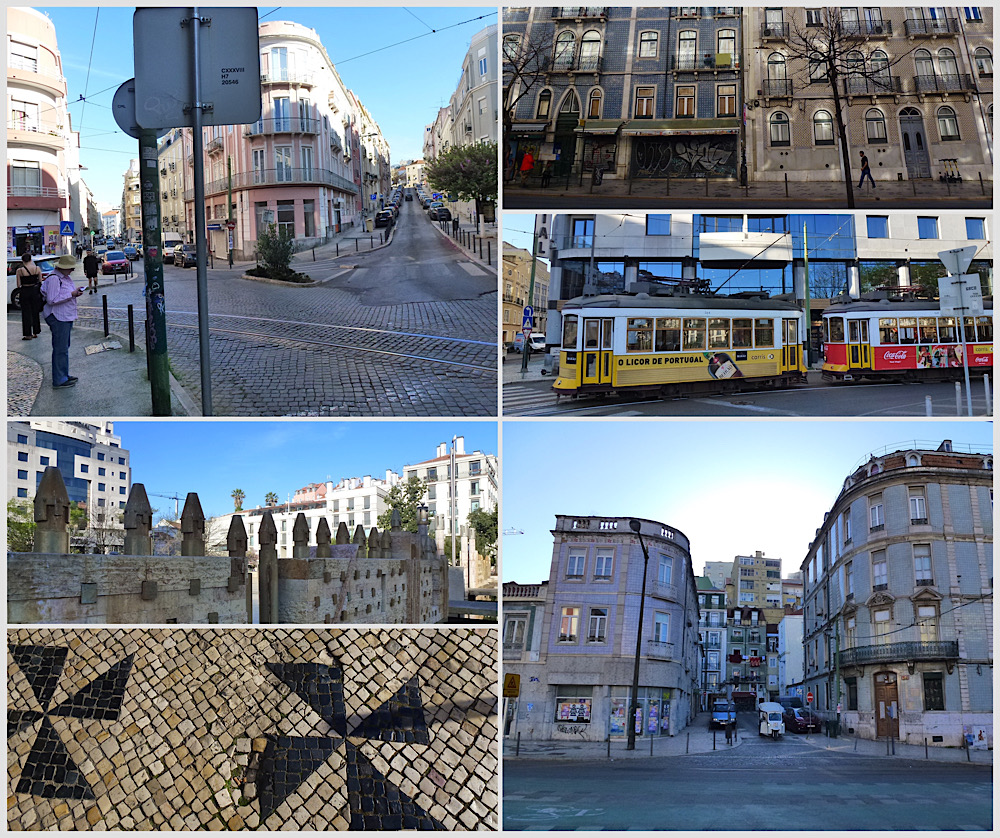
From Moniz, the route starts off pretty flat, and winds its way through a rather disorganised mixture of one-way and dual carriageways, with the to and the from trams sometimes sharing a track, other times heading off around a block to rejoin or run parallel later.
The streetscapes here are amazing, with mostly older buildings, no high rise, long deep canyons between blocks, piazzas, stairs and lookouts galore. The tram then starts to ascend the hills, weaving in and around, squeezing between terrifyingly narrow pinch points and, it seems, always having right of way, except at traffic lighted intersections (of which there are relatively few in the older districts).
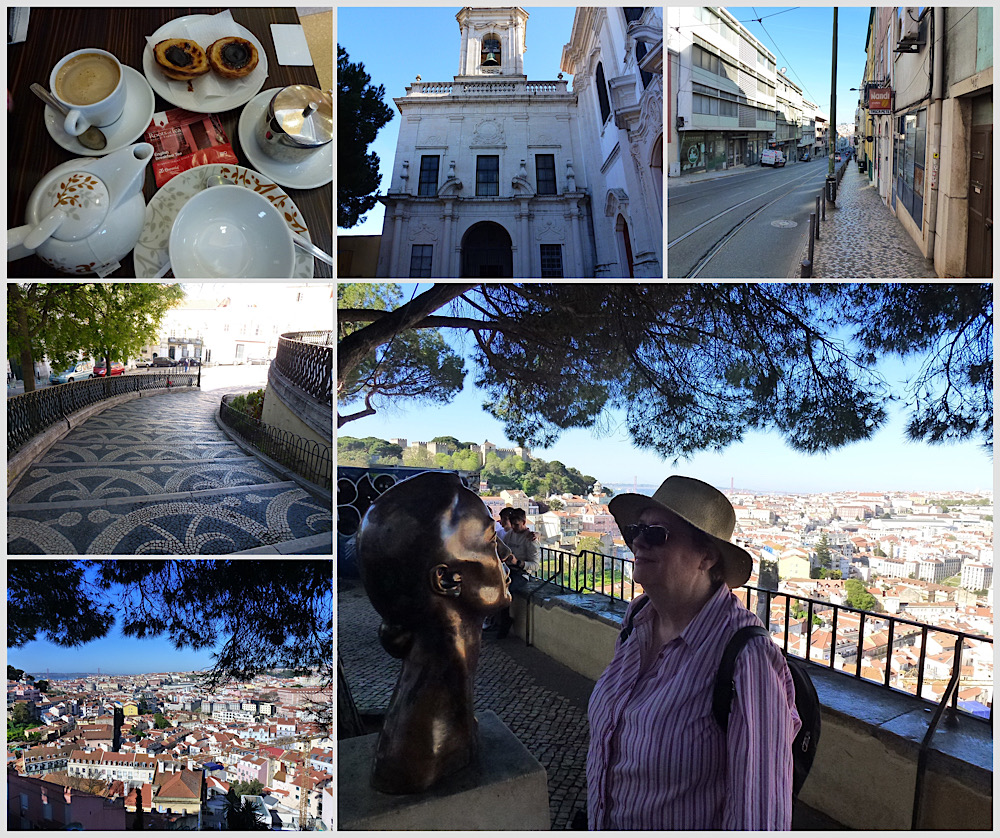
Our fitbits told us we had already done 5000 steps by early morning tea, so decided to reward ourselves with a break, and stopped into a pastelaria (or Portuguese cake shop) and had tea/coffee and a pasteis de nata (Portuguese custard tart) each. We are on a mission to discover the best one, so today would help in the sampling process. Refreshed and toiletted we headed off again, following the line, diverting to a stunning lookout, nipping into a park or popping into an interesting shop along the way.
Nothing much is open until after 9, so the first part of our journey had less opportunity than later to look in shops. One of the things we noticed about older buildings is they are clad in ceramic tiles. Each building has its own unique patternation and colour, I decided to collect these and will present them in a subsequent post (we will visit a tile museum- yes, such a thing exists. More on that later). We even walked past an old tile/ceramic manufacturer covered with magnificent pictorial friezes made out of tiles. Tourist shops sell tiles and samplers, the designs are used in illustrations and decorative motifs on household items and souvenirs. It is a thing here.
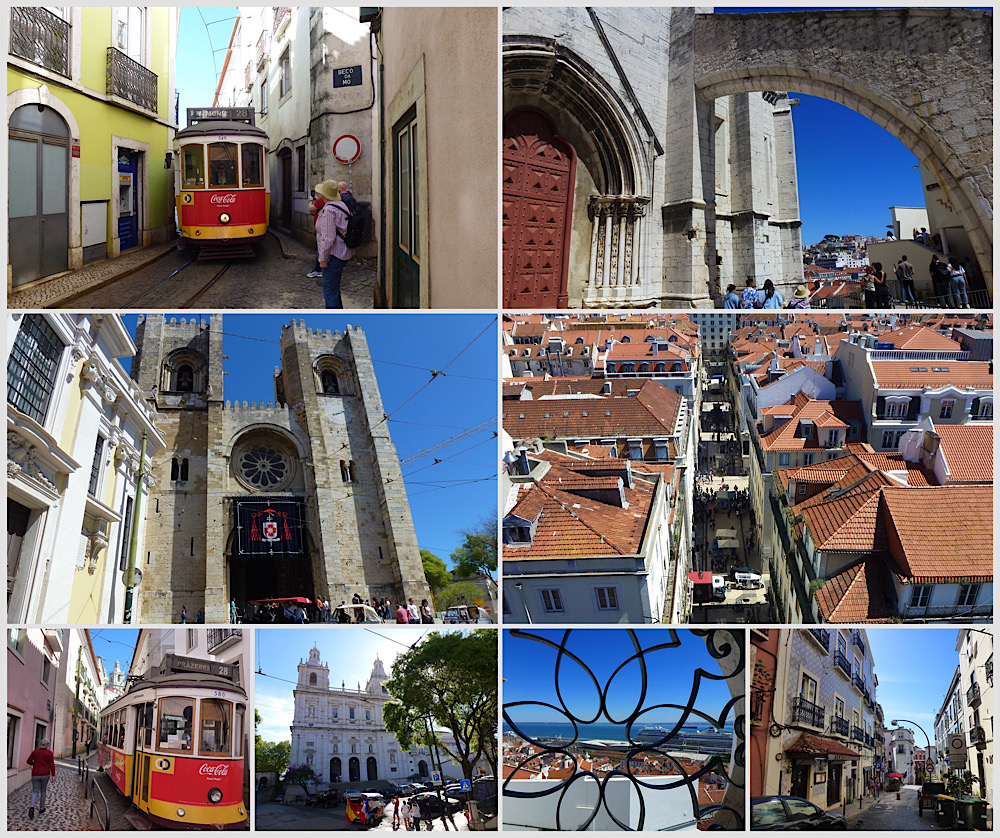
Lisbon is a coastal city, on the pinch point where a number of rivers empty into a large estuary that is open to the Atlantic Ocean. There is a narrow strip of coastal land that is fairly flat and the majority of the city lies on hills and ridges that rise sharply from the coastal fringe. Before long, the tram line ascends to the upper ridges, offering spectacular panoramic vistas of the coast and the myriad hills, all a patchwork of terracotta roof tile and narrow street boulevards.
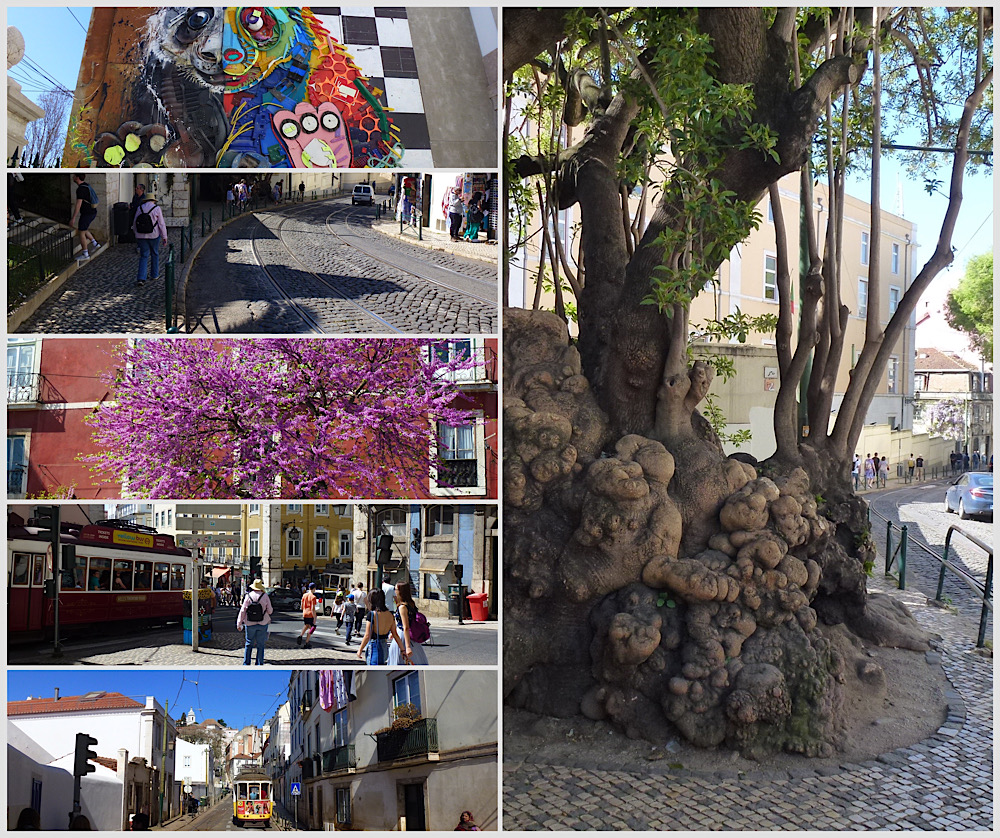
As walkers, the hills feel daunting until you get started, steps and side tracks make the ascent and descent manageable, and it is easy to get distracted by the ornate churches and other architectural characteristics of the region. At about the half-way point on the route the tram descends into the crowded and uncharacteristically organised streets of the coastal fringe. In 1755, the most destructive earthquake on record happened here in Lisbon, it devastated this area, some 70,000 deaths occurred, most were people in churches for All Saints Day. This coastal fringe was demolished and totally reworked, with regular rectangular blocks and wider streets (we wondered why it changed character so dramatically from the hillier districts.
Here we side tracked to Praco do Comercio, a huge square with Arco da Rua Augusta (a Roman triumphal arch, much like Le Arc de Triumph in Paris, just a little smaller. Seems the Roman conquests left lots of monolithic sculpture as reminders of the scale of their empire) as its gateway. We headed towards the waters edge, a narrow grey beach, and ate our packed lunch (crusty rolls with pork charcuterie) and rested our weary legs while people watching. In the distance left and right we could see two huge bridges that span the waterway, one that looks just like the Golden Gateway in the States. Perched atop hill on the far shore is a huge statue, much like the arms spread Jesus in Rio.
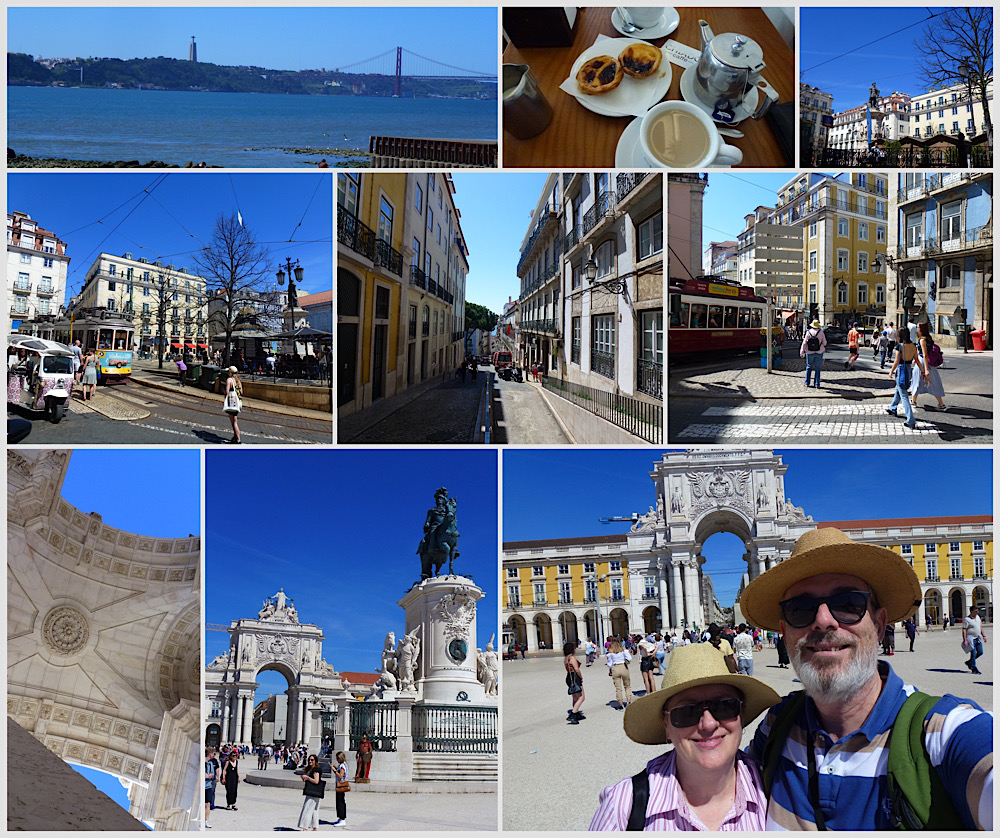
The day was sunny, relatively hot and we were close to done, so the final leg of the tram route gently (at first) wended it’s way back up the hill (apparently a mild hill by Lisbon standards, but our feet and legs would disagree). Eventually we arrived near Bica, close to the top of the funicular that leads down to our apartment. We stopped for a tea break and sampled another pasteis de nata (we figure we are doing a public service by finding the best one, right :P) then hobbled down the hill and home.
Our fitbits both expressed concern for how much we had exceeded our daily goals, our wrecked knees and calves thanked us for stopping, but it was a brilliant trek that let us see a lot of the city and we could have, at any point, bailed and just caught the tram if we were done. I think we both felt a sense of achievement at the end doing it on foot however.
A home cooked fish supper (pan fried thick grouper cutlets cut and scaled for us by a lady at the Goodtime markets) topped off another brilliant day in Lisboa.

